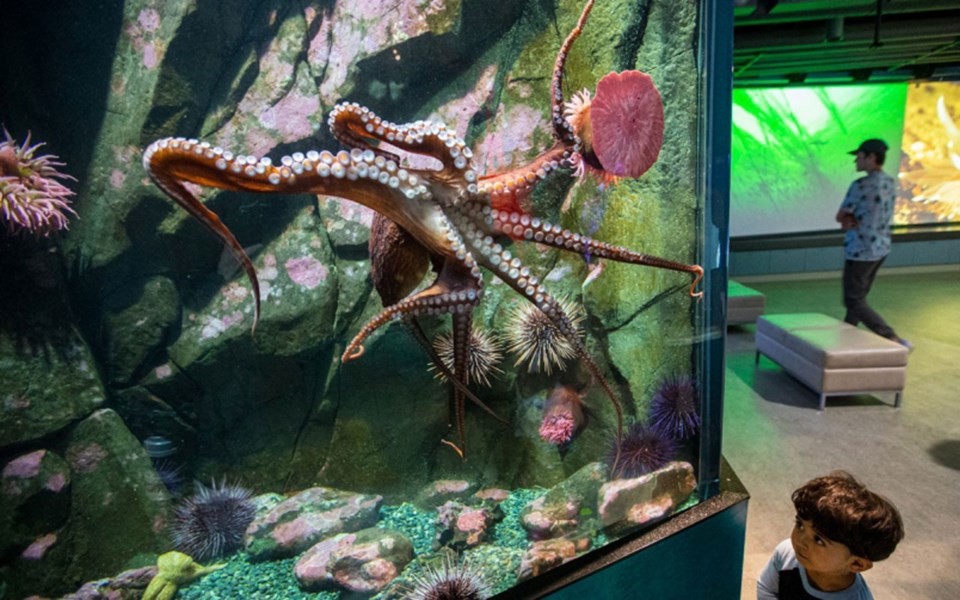Not many public-health officials get an octopus named after them, but Dr. Bonnie Henry is not your average provincial health officer.
Lauded internationally for her handling of the COVID-19 pandemic, Henry has had T-shirts, a pair of Fluevog shoes and artwork made in her honour.
Now the Shaw Centre for the Salish Sea in Sidney has named the most recent addition to its octopus population—who arrived last week—Henry for the doctor.
Henry is a giant Pacific octopus (Enteroctopus dolfleini), the largest octopus species in the world, with the ability to grow to up to 6.5 metres long (measured from the tip of one tentacle to the end of its opposing tentacle).
Weighing in at 2.2 kilograms, he joins more than 150 aquatic species at the not-for-profit aquarium and learning centre.
His tenure at the aquarium is temporary.
“We usually release them back into the wild after between four to six months,” said Tina Kelly, director of learning at the centre.
While octopuses are common to the region and often venture into shallow water, they’re not easy to see. Divers hired by the centre search rocky crags and caves in local waters to find a suitable candidate—be it male or female.
“They are masters of camouflage,” said Kelly, who has a biology degree from the University of Victoria. “Although it is common knowledge that they are usually found in caves and rocky crags, they often outwit snorkellers by making themselves look like a rock. Experienced divers will often look for evidence of a midden made by the octopus.”
Staff at the centre regularly give their visiting giant Pacific octopuses a name, as the cephalopods are known to have personalities. Typically, the public is invited to come up with a suitable name, with themes chosen, ballots and community votes. This time around, however, the animal-care team at the aquarium decided early on that if would be named Bonnie if it was a female and Henry if it was a male.
It helped that octopuses have three hearts, a symbol that has come to reflect the gratitude felt by the public for health-care and other frontline workers. Male and female octopuses look similar. But while females have eight arms, males have seven and a specialized arm, called a hectocotylus—always the third arm on the right. The male octopus uses its hectocotylus to deliver a sperm package to the female’s mantle during reproduction.
While it remains to be seen if Henry possesses the same calm demeanour as his namesake, octopuses are known for their intelligence. “All the animal-care team that have interacted with our resident octopuses over the years have stories of their personality traits,” Kelly said. “There was one particular octopus who would squirt water at one member of the team in a playful manner.”
Octopuses are recognized as the most intelligent invertebrates and can recognize humans they frequently come in contact with. To keep them occupied, the care team provides the octopus with toys and puzzles, such as a crab inside a jar with a lid or food inside a Kong (a dog toy).
Giant Pacific octopus range from California to Alaska and have a lifespan of up to five years in the wild. They can be found anywhere from the intertidal zone to a depth of 2,000 metres.
Octopuses’ normal diet includes squid, fish, red rock crab, other crustaceans and mollusks.
Like Pebbles, the centre’s last resident octopus, Henry will be released back to the wild at the same location he was found.
The Shaw Centre for the Salish Sea is now open 10 a.m. to 4:30 p.m. Friday to Tuesday. In honour of Canada Day, the centre will also be open Wednesday.
• For more information, go to salishseacentre.org.
To view the original version of this story, click here.




